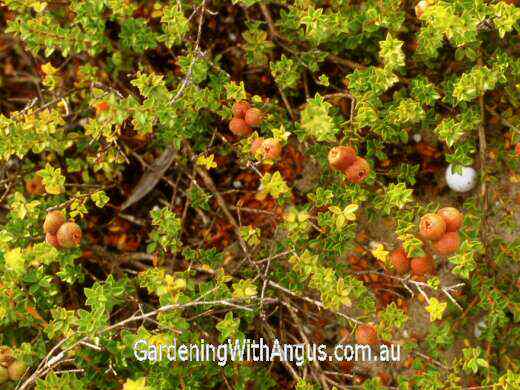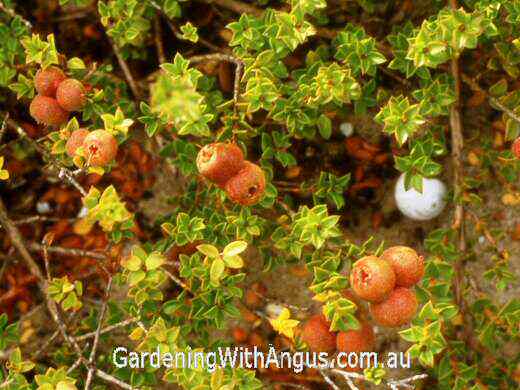This gorgeous plant produces a delicious bush food fruit with great potential. The fruits of the muntrie plant are small green and red berries that have the flavour of spicy apples and much higher antioxidant levels than blueberries!
It is quite an easy and attractive plant to grow, it forms a groundcover in the wild but you can also trellis the plant for easier harvesting. Great groundcover for coastal areas, also suppresses weeds. It will grow in most soils, including sand and clay. Tolerant of drought, frost and lime soils. Produces an abundance of white flowers in spring, followed by berries in late summer/early autumn. The berries can be ripe even when green. The plant is pollinated by insects, so planting other spring flowering plants around will help with pollination.
Pictures provided by Philip Clarke, from his new book Discovering Aboriginal Plant Use: Journeys of an Australian Anthropologist


